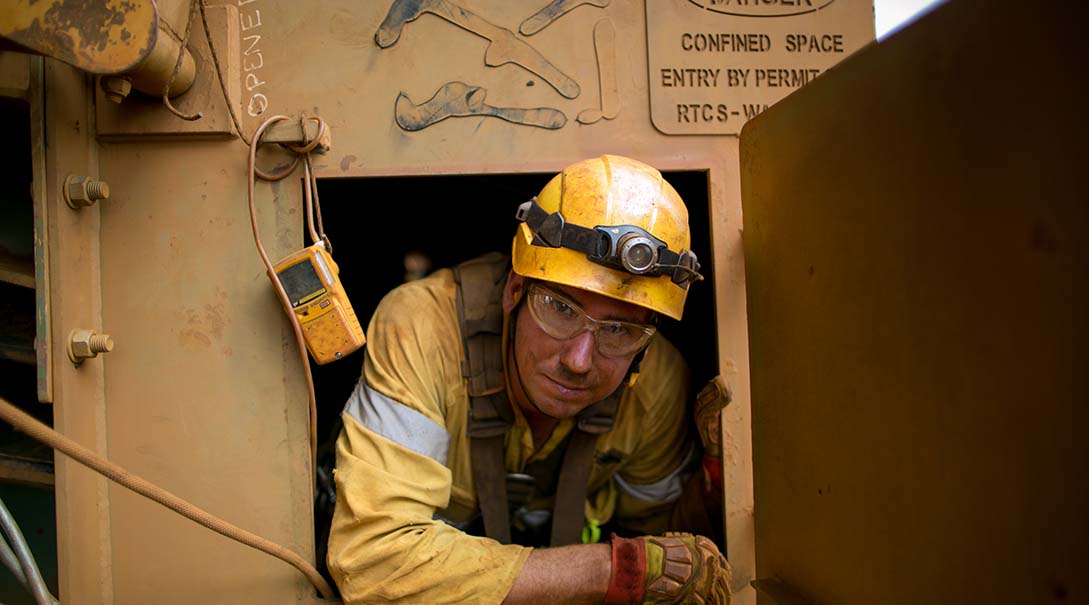According to the US Bureau of Labor Statistics, from 2011-2018, a total of 1,030 workers died from occupational injuries involving a confined space. Within that timeframe, from 2012-2017, the numbers steadily increased from a low of 88 in 2012 to a high of 166 in 2017.
Many of these fatalities have occurred due to the failure of employers to appreciate the increased threat to the safety of their workers in such hazardous environments as can be found in permit spaces. As a result, inadequate measures were taken to protect worker safety when working in these environments.
Per OSHA guidelines, a confined space is one with limited means of entry or exit, large enough to be occupied by one or more employees, and not meant for continuous occupancy. A permit-required confined space (or permit space) is a confined space with the presence of any or all of the following conditions that make them dangerous to employees who enter:
- Contains or could contain a hazardous atmosphere
- Contains a material that could overtake someone inside the space
- Has a configuration internally that could cause the entrant to be trapped or asphyxiated (such as floors that slope down into a smaller area or walls that converge inward)
- Contains other recognized health and safety hazards (such as unguarded machinery, live wires, or heat stress)
Because of the dangerous environment in a permit space, entry into these spaces must be a coordinated team effort. The confined space entry team is a team of workers assigned to specific roles and responsibilities. Before they perform an entry operation into a permit space, their employer’s responsibility is to ensure that each member is properly trained in their specific role.
Table of Contents
The Main Members of a Confined Space Entry Team
The confined space entry team has three main members–
- the entrant
- the attendant
- the supervisor
Each member must undergo training for their specific role and adhere to the rules while working in a permit space; the safety of the whole entry operation depends on everyone doing their job well and following all procedures as required.
The Confined Space Entry Team Duties & Responsibilities
Confined Space Entrant
The confined space entrant is the team member authorized by the employer to enter a permit space. Therefore, the entrant must be aware of the hazards associated with confined space entry in general, and particularly those present in the permit space being entered.
Since this team member has the highest risk of exposure to dangerous conditions, it is important that they know the modes of exposure and recognizes the signs and symptoms of exposure to any hazardous materials present and the consequences of exposure.
In addition, they must be properly trained in using all equipment necessary for performing their work as well as the use of safety, communications, testing and monitoring equipment, and any other equipment necessary for safe entry and rescue from a permit space.
As an additional measure of safety, the entrant must work with the attendant by communicating regularly and keeping the latter updated on their status, any exposure to hazardous materials, and if they see any prohibited conditions that could make working at the site unsafe.
The entrant must always stay alert to any warnings from the attendant regarding the site’s safety and be prepared to evacuate in case of the need for evacuation, either through an order from the attendant or an evacuation alarm.
Confined Space Attendant
The confined space attendant stands outside the permit space and must remain there until relieved of their duties by another attendant. The attendant’s job is deceptively simple and may seem like they only need to act if the entrant needs something, but this role is far more proactive than might be imagined.
Like the entrant, the attendant must also know how to use all appropriate equipment and be aware of entry hazards and the signs, symptoms, and modes of exposure to hazardous materials. In addition, the attendant must be able to identify, keep track of, and communicate regularly with all authorized entrants, remove unauthorized personnel, perform evacuation and rescue if necessary, and call for the rescue team if needed.
The attendant’s key role is to protect the safety of the entrant. As such, they are not permitted to take on any duty that might interfere with their primary safety-related responsibilities.
Confined Space Supervisor
The confined space supervisor is accountable for the safety of the entire entry operation, and the entry does not happen without their authorization. The supervisor determines whether it is safe to proceed by verifying safe entry conditions and authorizes and oversees entry operations once they are underway. The supervisor also confirms the availability and effectiveness of rescue services.
Should any issues such as a threat to the safety of the team or the discovery of any dangerous or prohibited conditions arise, the supervisor is responsible for terminating the entry and canceling the entry permit. Besides taking on supervisory responsibilities, just like the attendant, the supervisor is also responsible for removing any unauthorized personnel from the site. If properly trained and equipped, the supervisor can also serve as an authorized entrant or attendant.
Get the Right Confined Space Training for Your Team
Many confined spaces, whether they are permit or non-permit spaces, pose potential risks to the health and safety of your workers. While putting together a confined space training plan, many questions can arise, ranging from what qualifies as a confined space, how to determine whether it is permit-required or non-permit-required, to what type of training is needed for your employees.
AOTC has extensive experience providing compliance training services to a range of clients. Our training classes are designed to ensure that each employee is well-trained and can demonstrate key safety competencies. We also offer customized, on-site confined space entry team training programs to ensure you get what you need to protect your company and workers. Contact AOTC today to discuss your customized, on-site confined space entry team training.
